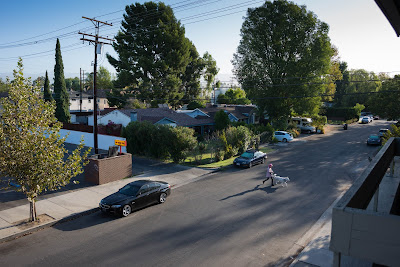It's been a while since we've had a guest review. I'm happy to present one today, by Chuck. He's taking a close look to the Nikon AF Nikkor 28-70mm f/3.5-4.5D lens.
General
Hi, guest reviewer Chuck here. Today I'm taking a look at one of the lightest and smallest normal zooms Nikon ever produced: the AF Nikkor 28-70mm f/3.5-4.5 D.I sometimes think of this lens as the older, shorter brother of the Nikkor 28-105mm f/3.5-4.5 D that Chris reviewed over two years ago. Since both lenses have the same variable maximum aperture, you already know two things this one gives up in exchange for being lighter and more compact: 35mm of reach at the long end, and a bit of extra light in the middle range, say from 35mm to 70mm, where the longer lens has slightly wider max apertures.
Are the space and weight savings worth those sacrifices? As always, to use Chris's favorite turn of phrase, it's a matter of scope. (Read on to the conclusion to see what I think.)
Optically, this lens performs very decently. Sharpness, while not at prime levels, is satisfactory even wide open, and quite good by f/8. Chromatic aberration is well-controlled. Distortion is minimal except at 28mm, where barrel distortion is noticeable. Vignetting is manageable. Bokeh is a bit nervous, but not unpleasantly so - about average for Nikon zooms.
It's hard for me to compare this lens with its longer sibling, the 28-105. I had a copy of the latter once; I got rid of it after a few days because my copy had truly horrible astigmatism - everything away from center was a blurry mess.
Comparing it to my 35mm f/2 AI-S at 35mm, the 28-70 in some ways outperforms the older, manual-focus lens, a fact that can be attributed to the zoom's relative lack of field curvature, in contrast to that prime's donut-shaped field. At 70mm and f/4.5, the 28-70 is not quite as sharp as my Tamron 70-300mm f/4-5.6 wide open, but it catches up at smaller apertures.
Pros/Cons
+ Very light for a normal zoom!+ Small and relatively unobtrusive
+ Surprisingly useful focal length range
+ Useful max reproduction ratio of greater than 1:5
- Smaller range of focal lengths than the 28-105 (or any of the modern AF-S normal zooms, for that matter)
- No built-in AF motor
- Not an f/2.8 zoom - but why would you expect one at the prices these sell for?
Ideal Uses
Great for:- FX users looking for a light, compact, and inexpensive normal zoom with very good performance.
- Fast-changing situations (with enough light) that demand flexible (but not too flexible) framing in a small, quick-handling lens.
Not for:
- DX users. The FX-equivalent focal length range of 42-105mm on DX is too long at the short end, although the range may be an intriguing one for portrait shooters.
- FX users who need a true Swiss-army knife of a zoom. 28mm is wide enough for me, but most people would probably prefer 24mm at the wide end. And 70mm does not provide much more reach than your standard 50mm prime.
- Users of cameras without a focus motor, such as the D3xxx series and the D5xxx series, unless you like focusing AF lenses manually (I don't).
Conclusion
Because of its compact size, light weight, and good build quality, this lens handles great. Take all of that and add the very good optics, and it turns out the lens is quite a joy to use - that is, as long as the limited zoom range and modest maximum aperture don't cramp your style.Should anyone buy this lens despite those two drawbacks, given the existence of the 28-105mm AF-D and the modern, consumer-class AF-S normal zooms, all of which arguably have even better optics?
It's certainly cheaper than any of those alternatives. At the time of this writing, copies of this lens in mint or near-mint condition were going for $80-$100 on eBay, compared to about $130-$150 for the 28-105, which, being much more heavily traded, is harder to find in truly great condition.
But even putting that difference aside, for a certain class of user, I think the answer is yes. Consider the following questions:
- Are you a "budget" FX user? (Yes, there is such a beast! A few FX owners buy their equipment used, on the cheap.)
- Is a light and fast setup more important to you than either ultimate image quality or ultimate flexibility?
- Do you prefer prime lenses but want to pick up an inexpensive normal zoom for the occasional run-and-gun situation?
If you can answer yes to any of those, the 28-70mm f/3.5-4.5 is worth your consideration.
Everyone else should pass this lens by.
Get it used here






No comments:
Post a Comment